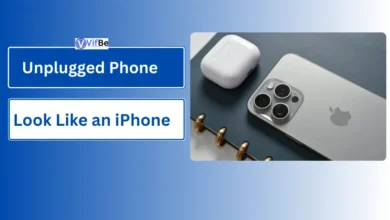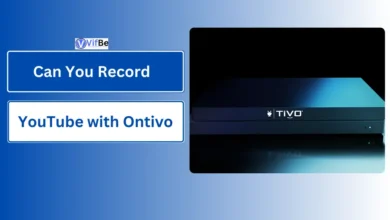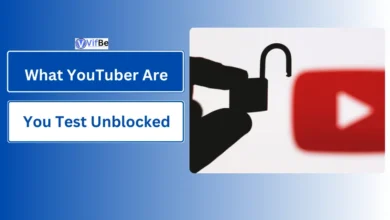Can You Charge a Chevy Bolt at a Tesla Station? What You Need to Know
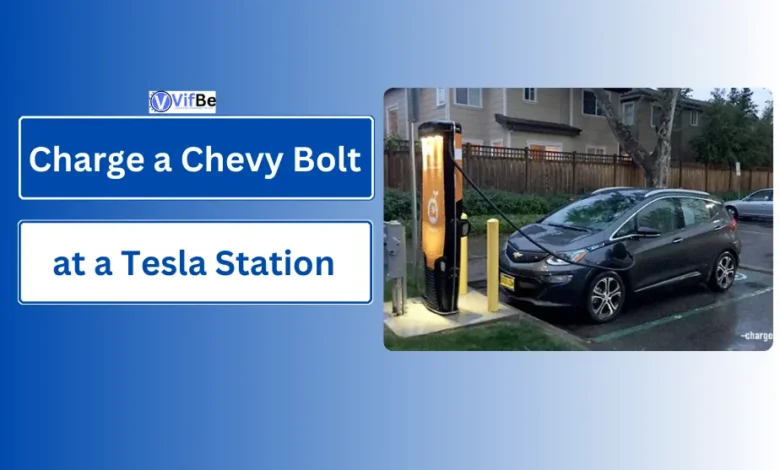
With the ever increasing popularity of electric vehicles (EVs), concerns for compatibility and charging present themselves among drivers. Some of the top queries people look for include if you can charge a Chevy Bolt at a Tesla charging terminal?
This article elaborates on the question Can You Charge a Chevy Bolt at a Tesla Station differences in charging structures; and the information Chevy Bolt users should acquire about using Tesla’s vast set of Superchargers.
An analysis of electric vehicle charging compatibility
In answering the question about whether it is possible to charge Chevy Bolt at a Tesla station it is essential to consider the voltage and connectors of electric vehicle. The Chevy Bolt like all the other non-Tesla EVs supports the CCS (Combined Charging System) for charging fast.
However, Tesla’s cars have developed their charger type for their established direct current (DC) Supercharger network. This fundamental difference is that the Chevy Bolt cannot connect to a Tesla Supercharger directly, but there are some stations for Bolt owners and some options which are growing at this time.
The Tesla Supercharger Network

Supercharger is a robust and a quickly growing infrastructure meant for intercity traversal through Tesla automotive vehicles. Superchargers are best located on highways and in highly-populated cities so Tesla drivers can charge their cars within 30 minutes for ranges of up to 200 miles depending on the car model.
Even though, this network has revolutionized Tesla, it does not natively natively work with car produced by other manufacturers like the Chevy Bolt. But, Tesla has announced to extend the Supercharger stations to other owners, meaning that Chevy Bolt could also be allowed to use the Tesla chargers.
This development would mean Bolt owners could charge at Tesla stations at greater speed by simply plugging in an adapter from CCS to the Tesla connector which exists. At this time details and schedules of this undertaking have not been revealed but is crucial as an upcoming EV buyer.
Chevy Bolt Charging Stations
However, the Chevy Bolt’s owners are not deprived of several other charging types except for the Tesla company’s Supercharger. ChargePoint, EVgo, and Electrify America are already present targets that are widespread, support the Chevy Bolt’s CCS system. These networks include both Level 2 charging stations that are most frequently installed in urban environments, as well as DC Fast Chargers that make charging fast.
The level 2 chargers could allow a range of 10 to 60 miles per hour, they are usually installed at homes and workplace as they take one or more hours to charge a car. While in DC, fast chargers can in a short amount of time, compensate for a large amount of battery capacity, just like in Tesla Superchargers.
EV Charging Speed Comparison
Where charging speed is concerned it is important to know the type of charger used to determine the charging time bracket. Currently, the engineers are able to provide cars with as much as 250 kW with energy through the use of Tesla Superchargers, which makes it possible to recharge quickly.
On the other hand, the majority of public DC fast chargers also provide similar power levels, their actual charging rates can vary according to different criteria including state of charge and battery temperature levels.
Owners of Chevy Bolt could use that particular DC fast charger to its maximum potential to get similar time similar to those of the Tesla stations. However, to achieve this efficiency, it is only obtained when compatible chargers and conditions are used. Hence there is need for Bolt drivers who intend to undertakelonger trips to understand where these fast charging stations are and their operational status.
Charging Costs and Budgeting
Another prospect that should be taken into consideration is the expense of such charging. All cars carry a tag that costs either by kilowatt hour or by minute; particularly for Tesla, the company has categorized its supercharger network.
On the other hand, charging costs for other networks, which are often called “CCS” instead of “CHAdeMO” or “Tesla,” can range largely. There are also two types of HI stations; some of them can be accessed through subscription only while others are chargeable by use.
Basically, it becomes cumbersome for any Chevy Bolt owner to look forcheap charging options hence should always take his/her/her research and planning. Charging and the cost of charging are best discovered through the use of applications that show the charging stations located along the routes to be adopted as well as the cost of charging at these stations when on long distances.
Battery Health Considerations
Different charging stations cause battery health and issues concerning their durability to be questioned. However, current rapid charging at any station is currently not a problem, but frequent use of fast chargers may influence battery degradation.
Thus it becomes very important for the Chevy Bolt owners to charge their cars both quickly and through Level 2 charging in order to keep the battery health in the green territory.
Draining the battery all the way is bad for the battery and so is fast charging it most of the time, many experts suggest thereby avoiding everyday fast charging. Recognizing how they charge is also important in helping to increase the longevity of the battery of the vehicle.
The Future of EV Charging
Charging infrastructure of EVs is continually changing, and several improvements are likely to occur in the near future. It is still unclear whether this trend will create more unified solutions for improving the charging experience for Bolt and all other EV users, through automaker partnerships with charging networks.
In the near future, expect that future models may have the universal charger that will enable any other car that is non-Tesla brand to directly access the Supercharger network. Further, the pressure pointing towards wanting more charging stations and even quicker charging technology seems to be lessening the range anxiety, a term used to describe the concern and apprehension that a car’s battery will run out of power before it is again able to charge.
The Use Experience and Testimonials of the Public
Experience of real drivers can also give considerable information, for example, how it could be to charge a Chevy Bolt at different facilities. People who own Bolt accounts expressed satisfaction with other networks of charging, especially noting stable and effective work of ChargePoint and EVgo. Yet the users also complain of lack of strong infrastructure and this may be attributed to charge stations where they can juice their batteries in such areas such as remote areas.
This way, they create a community of educated owners who would help each other make the best decisions concerning their charging equipment.
Understanding Chevy Bolt Charging Needs
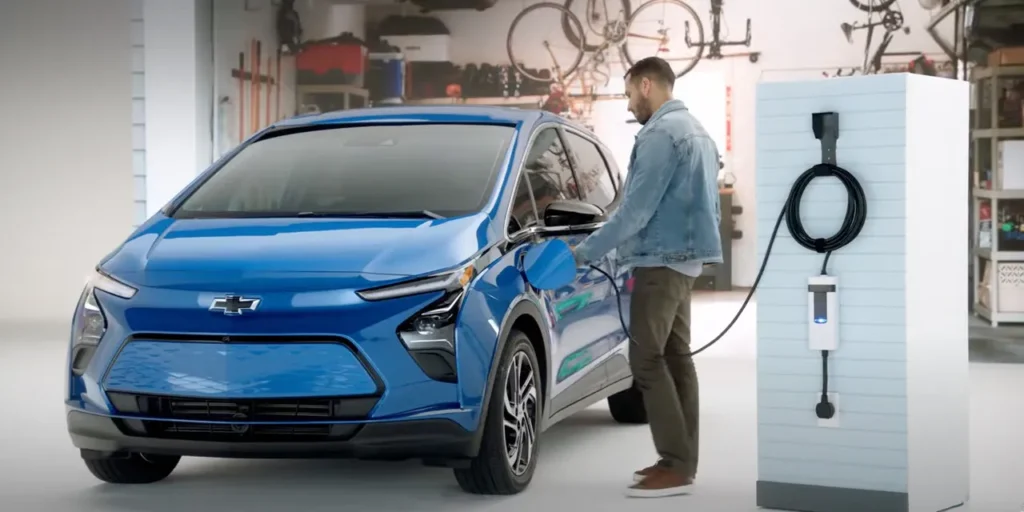
Since the Chevy Bolt is a new model that came into the market in the year 2017, it requires some level of understanding of how best to charge it due to the battery capacity and charging utility. The Bolt has a 66 kWh battery system and is expected to travel around 259 miles on a full charge.
The following factors about the charging options should be considered in order to maximize this range by owners. The Bolt operates at Level 1 and Level 2 charging, as well as, the DC fast charge according to the CCS norms. The first level charging, which is common at homes and utilises a household outlet takes the longest time to charge and can add only around 4 miles of charge for every hour charged.
Level 2, in its part, can provide between 20 to 25 miles of range at a time that takes at least an hour or more and will, therefore, be suitable for overnight charring. Precise judgment of these needs makes it possible for Bolt owners to plan their charging regime to improve battery efficiency and mileage.
How about Tesla Charging Stations, can other Non Tesla EVs use them?
This question assumes more significance now that Tesla is considering opening up its Supercharger network to other electric cars. Today, Tesla’s charging connectors create complication for other EV, such as Chevy Bolt directly to access super chargers.
Though, current advancements show that Tesla is likely to release compatibility interfaces which will enable compatibility with other cars not from Tesla. It could also greatly improve the ability to charge the Bolt for the Chevrolet brand’s consumers.
For now, they have to rely on CCS’ enabled public charging stations because Tesla’s supercharging stations are incompatible with their charging systems. As the market for EVs grows, current debates about adopting the common standard for charging the batteries may reach the improved solutions.
Taking a Second Look at Tesla Superchargers
Superchargers are high-speed chargers meant to allow drivers to charge their vehicles in uniformed remote routes, especially during long journeys. Every Supercharger station is comprised of a certain number of charging ‘docks’ so multiple Teslas can charge at one time.
In some of those units, the charging capabilities can go up to 250 kW, which enables drivers to add excellent range in 30 minutes. These stations are situated at the central points along the transport corridors and urban centers; therefore ideal for long distance transport needs.
Nevertheless, they are still limited to Tesla vehicles and causing constant debates among EV owners on making CHAdeMO accessible for non-Tesla vehicles. Knowledge about Superchargers’ infrastructure can make some Bolt owners appreciate a strong charging network even if they cannot use it yet.
Where Does Tesla Have Its Charging Stations
Locating a Tesla charging station is quite easy due to the multiple reveals and applications designed for electric cars’ users. From the Tesla application and the car interface there is information about the current location of all Superchargers including route availability and charging speed.
Besides that, other apps such as PlugShare and ChargePoint contain detailed maps of charging stations by different networks, including Tesla. These platforms can refine searches using connector types, charging speeds, as well as the users’ rating. To those thinking of going for a long drive with their Chevy Bolt, using these resources add beauty to the practice and makes sure that charging services are within sight.
The Charging Infrastructure as Consideration for Electric Vehicle Owners
The provision of such charging points forms an essential part of the charging network that is important to shape the current market for electric cars. The more cars are produced and used as electric-type vehicles, the more significant the need for the readily available stations is. A strong charging infrastructure also helps reduce a related concern, called ‘range anxiety’—fear of running out of battery power—and predisposes potential customers to own electric cars.
The charging places should be located in urban areas, at the highway patch, or wherever persons dwell such as shopping malls or their working zones. Such availability helps drivers to recharge at convenient times making the shift to EVs easier for anyone including Chevy Bolt owners.
The right way to charge at a Tesla Station
Regarding charging at Tesla centres, there are published etiquettes that guide the charging so that it becomes smooth for all the users. While Tesla Superchargers are meant only for Tesla proprietaries, other EVs, might occasionally find themselves in some sort of situation, wherein charging civility becomes an issue.
There is the need to observe the time one takes when charging; it is desirable to move out of the charging station as soon as one charges to create an opportunity for other users. Furthermore, following the rules of charging limits or not dragging cables, besides enabling a positive engaging environment for all EV users including Tesla cars also improves external perception of chargers.
A. Are all Tesla Superchargers Compatible with every EV?
At the moment, Tesla superchargers cannot charge all models of EVs, since the company applies a distinctive form of connector. As for Tesla charging, the company has only suggested it to become more open to the public, but it has not shared the details. Non-Tesla cars such as Chevy Bolt uses CCS connectors when it comes to fast charging, and therefore, full access to the superchargers are still inaccessible today.
However, adapters’ introduction might have the positive side effect that future charging solutions might address the charging needs of disabled people. Thus, to fill the charging needs Chevy Bolt owners again and again have to look for other networks of charging stations equipped with CCS.
Exploring the Chevy Bolt’s Charging Capabilities

Chevy Bolt recharging framework is something that is supposed to provide versatility and ease to the users. CCS compatible connectors allow Bolt drivers to choose whether to plug it into Level 1, Level 2 or DC fast charging connectable Level 2. Level 1 charging is fine for at home, overnight charging, whereas, Level 2 charging is more suitable for day to day driving.
Commencement charge points dispensing the CCS standard can restore a large scale of capacity at a time, and therefore, suitable for longer distances. It makes sense to understand these capabilities to be able to develop the most suitable charging plan that will meet the life style and usage patterns of Bolt owners.
The Cost of Charging Your Chevy Bolt at Tesla Superchargers

If and when charging access at Tesla Superchargers becomes available for the Chevy Bolt, it’s important that they know what the costs will be. Tesla, on average, set their Supercharging prices to TCO in per-kilowatt-hour or per minute charges depending on the member country and competitive environment.
As such, for Bolt owners, this could be a far much expensive charging point than that offered by other networks, which could have differently designed tariffs. This is that drivers should always compare between the gains of fast charging to the attendant losses. Finally, if Tesla is allowed an access to utilize the Supercharger network, monitoring costs will be significant to using to manage charging trips during traveling.
Charging Your Chevy Bolt: Fast Charging versus Normal Charging:
Now when it comes to charging a Chevy Bolt it is important to know the difference between a fast charge and conventional charging. DC fast charging is a process through which charging, which replenishes the battery capacity very quickly, and can be as fast as 80% in about half an hour.
Applicable on long-hauls, this method is likely to provide time efficiently especially if time is concise. Daily charging on the other hand consists of level 1 and level 2 chargers which are most relevant for home or other places normally where cars can stay for a long period of time.
While fast charges are actually good in emergencies or instances where one needs the battery full and very quick, normal charges will do a lot in as far as battery health is concerned. Hence, the integration of current and direct charging is very appropriate when Chevis Bolt users want to arrange their charging plan effectively.
Practical Applications for Convenient Access to Charging Stations
Currently, available many easy-to-use applications that can assist the Chevy Bolt’s owner to find the most suitable and easily accessible charging stations. Some of the most used PV initiatives are indeed PlugShare, ChargePoint, and A Better Route Planner; they are equipped with an icon-based map that illustrates the charging stations, the customers’ reviews, and the charging stations’ availability.
There is also a filter based on the kind of connector, on the charging rate, and on the accepted payments. It is also possible to find such applications to be rather helpful when in urgent search for appropriate points to charge. When incorporating these tools into their travel planning Bolt owners can be confident charging infrastructure is always available, thus enriching their overall EV experience.
Conclusion:
All in all, though today owners of Chevy Bolt cannot charge their cars at Tesla’s Supercharger, there may be chances in futures in the near future. It might be useful to know how much charging capacity the Chevy Bolt demands, as well as how strong and weak Tesla’s supercharging is in this case so that drivers could make proper charging planning.
With the advents in the EV industry, technological advancement in charging technology and the growth of charging infrastructure will be instrumental for improving the experience of all electric car users. Only if the owners of Chevy Bolt remain active and informed on the charge opportunities, they will have an opportunity to successfully progress in their charging activity and promote electric vehicles.
FAQ: Related Can You Charge a Chevy Bolt at a Tesla Station
Can I charge my Chevy Bolt at a Tesla Supercharger?
At the moment, Superchargers are exclusive to Teslas, while the Tesla connector is incompatible with the Chevy Bolt. However, Tesla has signaled that it might allow owner of other car brands use its Supercharger stations and if Bolt has access to this network, it will obviously require an adapter.
What are the charging options for Chevy Bolt owners?
Chevy Bolt owners can charge their vehicles using the Level 1 and Level 2 charging stations in addition to using DC fast chargers with the CCS protocol. Current charging networks such as ChargePoint and Electrify America also make chargers available for compatible vehicles to use.
How fast can I charge my Chevy Bolt?
There are different types of chargers, they range from 32Amp and 40Amp chargers up to 50 kW inverters and above, the charging speed of Shock Bolt is determined by the type of charger. Depending on the charging station, Level 2 chargers deliver about 25 miles per hour of charging and DC Fast chargers at 90 miles per half an hour of charging. There are only Tesla Superchargers that always point to the quickest charging, but customers are limited at the moment.
What are the benefits of charging at Tesla stations?
If charging access is granted, the benefits of using the Tesla Superchargers would be the comparatively fast charging times together with network density. Whilst some Tesla stations are existent along the route, others are strategically found near service centers thus making it easy to find a station when one is extremely tired.
Are there costs associated with charging at Tesla stations?
If Chevy Bolt owners get a chance to use Tesla Superchargers, the cost will be aligned to the tariffs established by Tesla for the specific area. Tesla’s pricing structure depends on the kilowatt-hour, although pricing can be per minute and is subject to market changes. There is need to compare prices with other public charging options in a bid to determine which car is cheaper to charge.
What is the difference between Level 2 charging and DC fast charging?
Level 2 charging requires a 240-volt outlet and usually is slower, with a full charge of a vehicle taking several hours. For instance, DC fast charging can refuel a vehicle to upto 80 percent in roughly 30 minutes of charging. Which one of the two options to choose will depend on how often you have to charge your vehicle and how much time you have.

